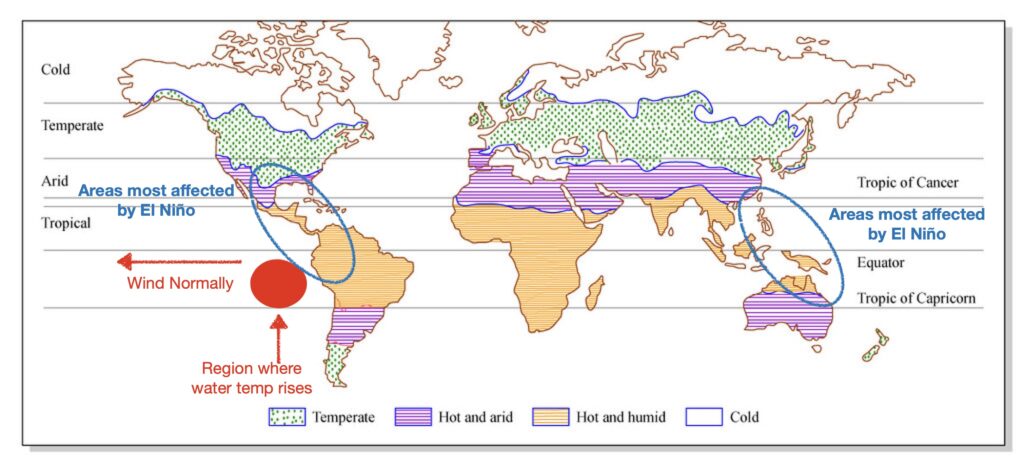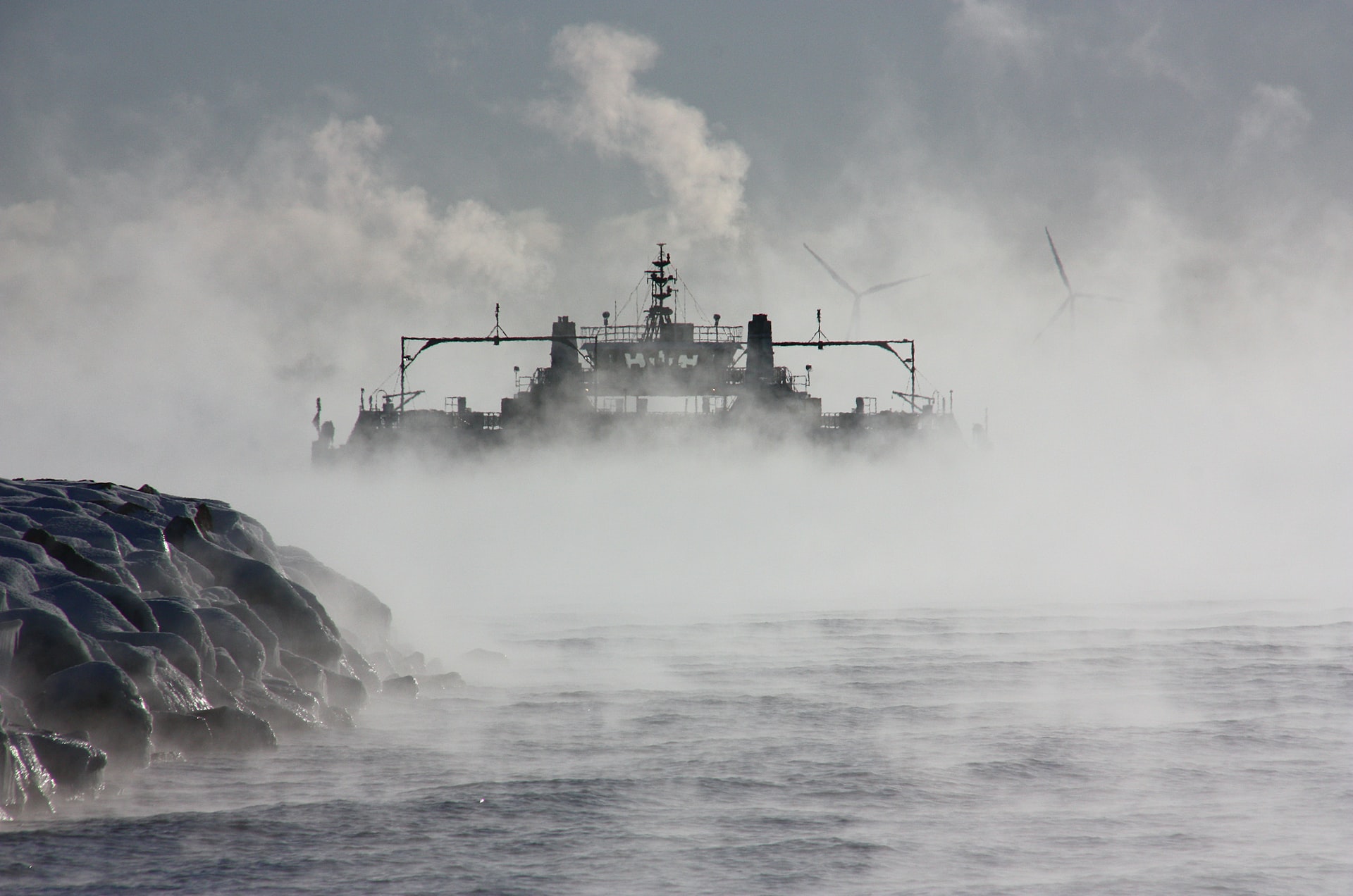Reading Time: < 1 minutes
- The ocean between Asia and the Americas is the Pacific Ocean.
- During normal conditions in this ocean, winds blow from east to west along the equator, taking surface water from South America toward Asia.
- And surface water is almost always warmer than deep water.
- As this surface water moves away, cold water rises from the depths to replace the warm water.
- But every few years, the winds from South America to Asia weaken.
- This leads to warm water being pushed back toward the Americas.
- This raises the surface temperature of the water around the Americas by 1.5OC to 2.5OC above average.
- And this unusual warming of surface water is called El Niño.
- El Niño events occur irregularly at two to seven-year intervals and can’t be predicted.
- They can last from nine months to a year and, in some cases, for several years.
- It causes increased rainfall in the southern parts of the US & northern parts of South America.
- And drier-than-normal conditions over northern Australia, Indonesia, and the Philippines.
- South American fishermen first noticed this unusually warm water in the region in the 1600s.
- There are no records of what these fishermen called the phenomenon, but Spanish immigrants called it El Niño, which translates to “the little boy”.
- When capitalised in Spanish, EL NIñO means the Christ Child and was used because the phenomenon often arrived around Christmas.
Image courtesy of MIT OpenCourseWare
Reference shelf :











